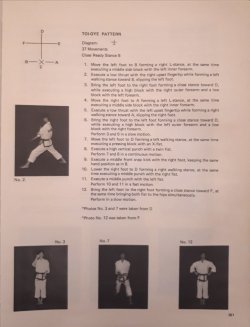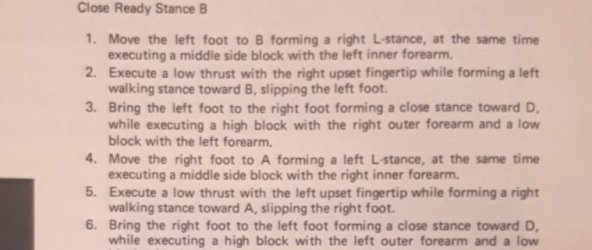BaehrTKD
Green Belt
- Joined
- Dec 16, 2023
- Messages
- 136
- Reaction score
- 19
I thought I'd do a thread on this because I find it fascinating. One thing I've noticed over the years (once YouTube came along in 2007 and people could really begin to see what students of other TKD schools were doing), I noticed that nobody did the patterns the same way we did. My instructor (Chung Oh) was one of General Choi's original black belt students, meaning the first instructor group General Choi produced for his new martial art.
We know that taekwondo has changed slightly over the years. We know some patterns have been added and others have been removed. We know patterns have changed over time.
My hypothesis is this: The way we learned TKD is part of the oldest style that existed, and we may have been the last students to learn it. (Or conversely, General Choi made some last minute improvements to his patterns which never made it into the books and he taught those to Chung Oh given their close proximity in southern Ontario.) Or maybe Chung Oh made the changes with Choi's blessing. Who knows?
If you consider the lineage, it goes like this: General Choi -> Chung Oh -> Me
(The arrows mean said instructor directly taught the person to the right.)
As we know from the "telephone game", the more levels of indirection between founder and student, the more things change.
One thing that never changed was how Chung Oh taught the patterns at his school. He had thousands of students over the years and they all learned the patterns the same way, and I have yet to find another school that does it the same way.
Some examples include:
Do-San: After the fingertip middle straight thrust, nobody escapes from the wrist grab like we do, and nobody else pivots into L-stance for the first back-fist side strike.
Joong-Gun: After the back-fist side strikes, every other school drops their hand as a form of wrist grab escape, except us. We pull back and fire the reverse middle punch.
Toi-Gye: After the fingertip low straight thrust, everyone does a back-fist back strike and low block. We do outward forearm side block and low block.
Hwa-Rang: After the middle punch, every other school steps forward, grabs their fist, and pulls away while kicking. We do a round punch.
Choong-Jang: Every other school does a back-fist front strike with their other hand near their elbow. We do upper elbow front strike.
Sam-Il: Everyone else does a middle punch in L-stance with the other fist at the shoulder. We do a 9-shaped punch.
We know that taekwondo has changed slightly over the years. We know some patterns have been added and others have been removed. We know patterns have changed over time.
My hypothesis is this: The way we learned TKD is part of the oldest style that existed, and we may have been the last students to learn it. (Or conversely, General Choi made some last minute improvements to his patterns which never made it into the books and he taught those to Chung Oh given their close proximity in southern Ontario.) Or maybe Chung Oh made the changes with Choi's blessing. Who knows?
If you consider the lineage, it goes like this: General Choi -> Chung Oh -> Me
(The arrows mean said instructor directly taught the person to the right.)
As we know from the "telephone game", the more levels of indirection between founder and student, the more things change.
One thing that never changed was how Chung Oh taught the patterns at his school. He had thousands of students over the years and they all learned the patterns the same way, and I have yet to find another school that does it the same way.
Some examples include:
Do-San: After the fingertip middle straight thrust, nobody escapes from the wrist grab like we do, and nobody else pivots into L-stance for the first back-fist side strike.
Joong-Gun: After the back-fist side strikes, every other school drops their hand as a form of wrist grab escape, except us. We pull back and fire the reverse middle punch.
Toi-Gye: After the fingertip low straight thrust, everyone does a back-fist back strike and low block. We do outward forearm side block and low block.
Hwa-Rang: After the middle punch, every other school steps forward, grabs their fist, and pulls away while kicking. We do a round punch.
Choong-Jang: Every other school does a back-fist front strike with their other hand near their elbow. We do upper elbow front strike.
Sam-Il: Everyone else does a middle punch in L-stance with the other fist at the shoulder. We do a 9-shaped punch.


